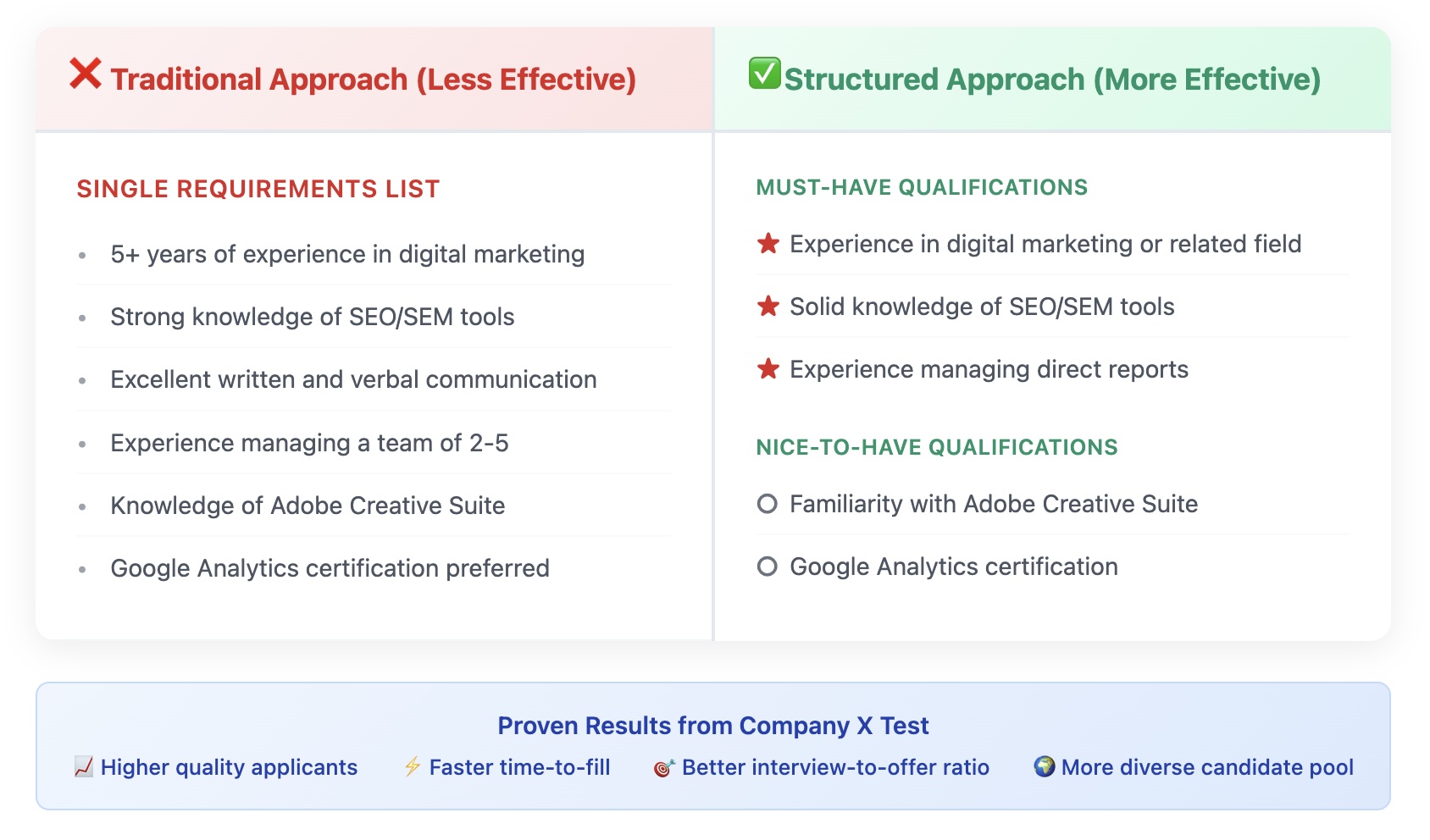Employee relations metrics measure employee engagement, satisfaction, and retention, as well as overall workplace culture. Companies that prioritize employee relations and create supportive work environments generally see better results in all aspects. For example, Google and Facebook are known for their strong focus on employee satisfaction, which leads to higher productivity and better business outcomes.
According to an HR Acuity report, tracking employee relations metrics has multiple business benefits. 68% of companies use it to identify training needs, 54% to create better employee relations policies, and 41% to identify potential inclusion and equity issues.
As an HR and employee relations professional, tracking these metrics can help you improve employee engagement, productivity, punctuality, and motivation.
Contents
What is employee relations?
What are employee relations metrics?
11 employee relations metrics: What to track and how
HR best practices for improving employee relations

What is employee relations?
Employee relations is the management of the relationship between employers and employees, both individually and collectively. It includes a company’s policies and the HR staff who focus on these relationships.
Typically, HR professionals or employee relations professionals manage this function. They are tasked with developing employee relations strategies to build strong connections between managers and their team members.
A positive company culture can help achieve this by maintaining a healthy work environment and addressing employee concerns. Effective employee relations can also ensure a productive workplace where employees feel valued and supported.
What are employee relations metrics?
Employee relations metrics track the state of employee relations in your company and assess the effectiveness of efforts to improve employee-employer relationships. They provide valuable insights into various aspects of the employer-employee relationship, such as employee engagement, satisfaction, and turnover rates.
These metrics are crucial for HR as they offer a clear view of the impact of their employee relations strategies. By analyzing them, you can identify areas for improvement and measure the success of initiatives to enhance employee relations.
By focusing on HR metrics that matter, like employee feedback, grievance resolution rates, and retention rates, you can refine its approach to build a more supportive and inclusive work environment. This contributes to overall employee happiness and organizational success, leading to a more productive and motivated workforce.
HR tip
Measure employee engagement often. Regularly assess employee engagement through surveys and feedback tools. High engagement correlates with better productivity and lower turnover rates. Use tools like Gallup’s Q12 survey to get a pulse on your workforce’s engagement levels.
11 employee relations metrics: What to track and how
By tracking specific HR KPIs, you can gain insights into your workforce’s health and implement strategies to improve it.


1. New hire onboarding and training
Why it’s important: Effective onboarding and training are crucial for integrating new hires smoothly into the organization, reducing time to productivity, and enhancing employee engagement and retention.
How to track:
- Onboarding completion rates: Track the percentage of new hires who complete the onboarding process within a specified time frame.
- Time to productivity: Measure the time it takes for new hires to reach expected performance levels.
- Training feedback: Collect feedback from new hires on the onboarding and training process through surveys and interviews.
- Progress tracking: Maintain records of each new hire’s progress through training modules and milestones.
2. Employee engagement scores
Why it’s important: Employee engagement scores measure employees’ commitment to their organization. High engagement levels indicate that employees are motivated and likely to stay with the company, contributing to its success. Conversely, low engagement can signal potential issues that might lead to increased turnover.
How to track:
- Regular engagement surveys: Conduct quarterly, biannual, or annual surveys to gauge employee sentiment. Include questions about job satisfaction, alignment with company goals, and overall morale.
- Employee Net Promoter Score (eNPS): This metric asks employees how likely they are to recommend the company as a place to work. A high eNPS indicates strong engagement and satisfaction.
- Stay interviews: Conduct one-on-one interviews with employees to understand their reasons for staying with the company and how they think their work experience could improve.
3. Absenteeism rate
Why it’s important: A company’s absenteeism rate reflects how often employees are absent from work. A high absenteeism rate can indicate low morale, health issues, or disengagement, all of which can impact productivity.
How to track:
- Attendance records: Keep detailed records of employee attendance, tracking patterns over time to identify trends.
- Absenteeism reports: Generate monthly or quarterly reports to monitor and compare absenteeism rates across different departments and periods.
- Reasons for absence: Collect data on the reasons for absenteeism to address any underlying issues, such as health concerns or workplace dissatisfaction.
4. Turnover rate
Why it’s important: An organization’s turnover rate measures how frequently employees leave the organization. High turnover is not only costly and disruptive for businesses but also often affects employee morale.
How to track:
- Separation data: Track the number of employees leaving the company within a specific period and calculate the turnover rate as a percentage of the total workforce.
- Exit interviews: Conduct exit interviews with departing employees to understand their reasons for leaving and identify any common themes or issues.
- Benchmarking: Compare turnover rates with industry standards to assess whether your rate is above or below average.
5. Retention rate of top performers
Why it’s important: Retaining top performers is critical for maintaining a competitive edge and ensuring continued organizational success. Losing key talent can disrupt operations and diminish overall performance.
How to track:
- Performance reviews: Identify top performers through regular performance evaluations, and track their tenure with the company.
- Retention reports: Generate reports that specifically focus on the retention rates of high-performing employees, highlighting any trends or concerns.
- Career development plans: Implement and monitor personalized career development plans for top performers to keep them engaged and invested in the company.
HR tip
Actively share your findings with C-suite executives through quarterly reporting. Use storytelling techniques to connect findings to the business strategy and illustrate the impact on organizational goals.
6. DEIB index
Why it’s important: A diverse, inclusive, and equitable workplace fosters innovation, improves employee satisfaction, and enhances the company’s reputation. Tracking Diversity, Equity, Inclusion, and Belonging (DEIB) among employees also helps ensure the workplace is welcoming to people of diverse backgrounds.
How to track:
- Demographic data: Collect and analyze data on the demographic makeup of your workforce, including gender, ethnicity, age, nationality, and sexual orientation.
- Diversity and inclusion surveys: Conduct surveys to gauge employee perceptions of inclusivity within the organization and identify any areas for improvement.
- Diversity hiring metrics: Track the effectiveness of diversity-focused hiring initiatives and measure their impact on the company’s overall workforce composition.
7. Employee satisfaction rates
Why it’s important: High employee satisfaction is directly linked to greater productivity, higher retention rates, and an overall more positive work environment. Measuring employee satisfaction helps HR identify what the organization has been doing well and where it can improve to ensure a happy workforce.
How to track:
- Satisfaction surveys: Regularly conduct surveys to determine employees’ job satisfaction, work-life balance, and satisfaction with company policies.
- Pulse surveys: Use short, frequent surveys to gauge employee sentiment on specific work-related topics or changes within the organization.
- Feedback channels: Establish multiple channels for employees to provide feedback, such as suggestion boxes, open forums, and anonymous surveys.
8. Number of complaints, response times
Why it’s important: Tracking the number of complaints and how quickly they are resolved helps HR identify and address issues promptly, maintaining a healthy work environment.
How to track:
- Complaint logs: Maintain detailed logs of all complaints received, categorizing them by type and severity.
- Response time tracking: Measure the time taken to acknowledge, investigate, and resolve each complaint.
- Resolution rates: Track the percentage of complaints resolved satisfactorily and on time.
9. Percentage of positive/negative comments on internal and external sites
Why it’s important: Monitoring comments on platforms like Glassdoor, Indeed, and internal forums can provide insights into employee sentiment and the company’s public reputation.
How to track:
- Sentiment analysis tools: Use software tools to analyze the comments on various platforms and categorize them as positive, negative, or neutral. Popular sentiment analysis tools include MonkeyLearn, Lexalytics, Repustate, and TextBlob.
- Regular monitoring: Establish a routine for regularly monitoring and responding to comments on both internal and external sites.
- Action plans: Develop action plans to address any recurring negative feedback and reinforce positive aspects of the workplace.
10. Employee attrition
Why it’s important: Tracking employee attrition helps HR understand turnover rates and the underlying reasons for employees leaving. This insight is crucial for improving retention strategies, workforce planning, and maintaining organizational knowledge and stability.
How to track:
- Attrition rate calculation: Regularly calculate the employee attrition rate using the formula:
Attrition rate = (Number of departures / Average number of employees) ×100
- Exit interviews: Conduct exit interviews to gather qualitative data on why employees are leaving.
- Trend analysis: Analyze attrition trends over time by department, role, and other demographics to identify patterns and areas of concern.
11. Employee relations case closure
Why it’s important: Monitoring employee relations case closures ensures that employee issues are addressed promptly and fairly. This contributes to a positive work environment and legal compliance.
How to track:
- Case logs: Maintain detailed logs of all employee relations cases, including the nature of the issue, parties involved, and dates of key actions.
- Response time tracking: Measure the time taken to acknowledge, investigate, and resolve each case.
- Closure rates: Track the percentage of cases closed within specific time frames to ensure timely resolution.
- Resolution quality: Conduct follow-up surveys with involved parties to assess satisfaction with the resolution process.
- Trend analysis: Analyze case data to identify recurring issues or patterns that may require broader organizational interventions.
By tracking these HR KPIs, you can gain valuable insights into employee relations and implement targeted strategies to improve them. Regularly monitoring these metrics will help you enhance your effectiveness and contribute to higher employee satisfaction and organizational success.
Additionally, tracking employee relations metrics helps you understand your organization’s specific issues, which better equips HR professionals to make data-driven decisions that align with the organization’s goals. HR best practices for improving employee relations.
HR tip
Take active steps with leadership to develop employee relations initiatives based on the data findings. For example, insights can be used to:
- Identify training needs
- Improve on employee relations policies
- Develop or improve existing DEIB initiatives
- Inform staffing considerations


HR best practices for improving employee relations
Establish open, transparent communication channels
Trust is key in developing employee relations. Develop a trust-based culture by encouraging transparency between HR, employees, and management.
Encourage feedback and regular communication from management to employees via channels and platforms. This will encourage employees to speak up and assure them the company values their feedback, creating a culture of trust and honesty.
Create an aftercare process and determine your follow-up activities after surveys or investigations have been completed.
Provide strong, consistent support
Whether you’re dealing with new or existing employees, ensure you provide sufficient information and support in different situations. There should be specific channels employees can use to approach someone for help or to voice their concerns, and receive follow-up from HR regarding these issues.
Implement employee recognition and reward programs
Programs designed to recognize and reward outstanding employee contributions will boost employee morale, make them feel invested in organizational success, and ensure they’re more likely to remain at the company. Such programs can also enhance the company’s employer brand and public reputation.
Conduct training and L&D programs
Give employees opportunities to further develop their skills and knowledge, as this shows the company is invested in their professional growth. You can do this through mentorship programs and L&D workshops for different teams and individuals based on their existing roles and key objectives.
Measure the participation and effectiveness of L&D programs. High participation rates in such programs are linked to greater job satisfaction and retention. Tools like LinkedIn Learning and internal tracking systems can help quantify the impact of these initiatives on employee performance.
Maintain work-life balance
Perpetuate a company culture that prioritizes work-life balance, so employees do not risk burnout and will be less likely to resign as a result. Managers and team leaders should minimize the need for any overtime and ensure their team members work together as efficiently and effectively as possible.
Adopt a forward-looking approach to technology
The organization should be tech-friendly, remaining up-to-date on the latest tech and how it might be incorporated into work processes. This will give employees a sense of confidence that their company is invested in continuous improvement to make their jobs easier and allow them to perform better at work.
Develop clear procedures and policies to report misconduct
Employees should have access to specific channels/platforms to report misconduct by colleagues or superiors, especially if they feel unsafe. Take these reports seriously and mediate objectively between parties who are in conflict with one another to try to reach an understanding and improve future relations.
Addressing these issues promptly and thoroughly will assure employees the organization prioritizes their welfare and safety.
To sum up
Employee relations metrics are quantitative and qualitative indicators essential for understanding and improving the relationship between employers and employees. These metrics cover aspects like employee satisfaction, engagement levels, turnover rates, grievance incidences, and the effectiveness of communication channels.
Tracking employee relations metrics is crucial for HR departments because it enables them to proactively manage workforce issues, foster a positive organizational culture, and enhance employee retention. Moreover, demonstrating a commitment to addressing employee concerns and continuously improving workplace conditions can boost employee trust and loyalty, leading to improved performance and better overall organizational outcomes.


FAQ
Assess factors such as employee engagement and satisfaction, as well as absenteeism, retention, and turnover rates. You can do this through regular employee surveys and feedback mechanisms like suggestion boxes and online forms.
Employee relations metrics track the state of relationships between employers and employees, providing an indicator of the effectiveness of HR’s employee relations strategies. Key metrics include employee engagement scores, employee satisfaction, absenteeism, turnover and retention rates, and DEIB indices The number of employee complaints and the response times to them gauge how effectively the company addresses their concerns.
Monique Verduyn has been a writer for more than 20 years, covering general business topics as well as the IT, financial services, entrepreneurship, advertising, pharmaceuticals, and entertainment
sectors. She has interviewed prominent corporate leaders and thinkers for many top business publications. She has a keen interest in communication strategy development and implementation, and has worked with several global organisations to improve collaboration, productivity and performance in a world where employees are more influential than ever before.












